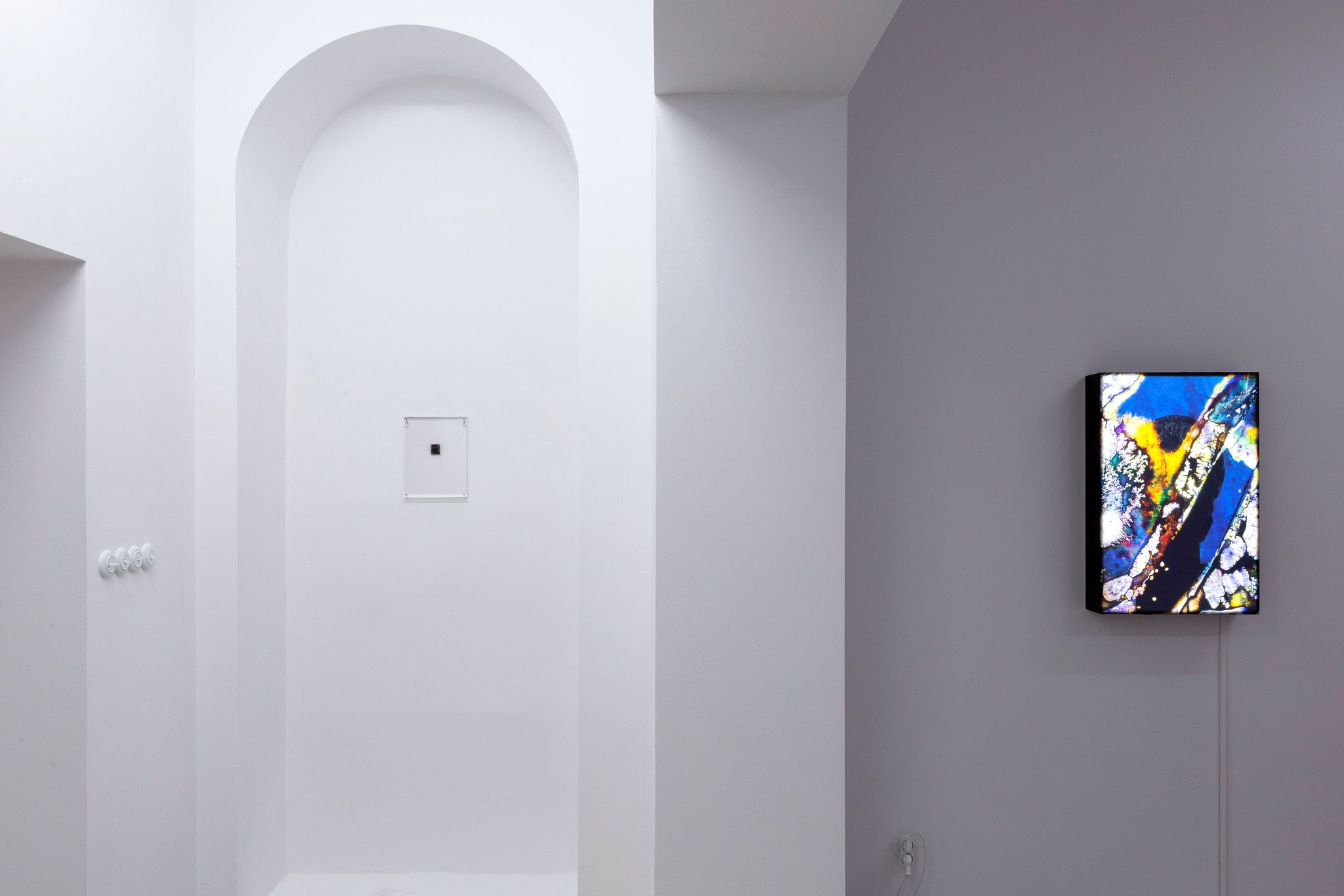Listen Like Thieves
Cracow, 29.06.2024 - 31.08. 2024
Yasmin Nebenführ looks at the process of decomposition of images. In most of them, depth can no longer be seen. Only traces of the original representations remain, coated with a layer of mold and fungus, now resembling thick layers of paint. It's as if the natural world favors abstraction over the representation to which the camera has accustomed us.
The photographs presented at the Piana Gallery were not taken by the artist. Nor were they developed or fixed by her. The time-consuming process of creating glossy images here has not been tainted by the action of the human hand. Exposure to mold and fungus irreversibly altered the diapositive photographic film, which the artist found, scanned and appropriated by cropping out its individual fragments. The practice draws on archival processes and brings to light unexpected interactions between photographic materials. The title Listen like Thieves was borrowed from the Sydney band INXS. Their piece addresses the issue of distrust of the media. Nebenführ is skeptical of the role of museum collections. The original paintings depict ancient bronzes, ceramics, busts and other early sculptures that have been stolen, exported - taken out of their original context. Works of art were often appropriated under the pretext of carrying out conservation. These strategies reflected the capitalist desire to commodify art and representation. Moreover, bronze works - like those created in other casting techniques - have much in common with photography. They are born out of the relationship between positive and negative. They facilitate and enhance the process of art distribution. Their production decreased significantly with the advent of photography - a solution that is definitely cheaper and easier to implement.
There is another, unusual and less obvious consequence of the process carried out by Nebenführ. The divisions between individual frames are obscured by the continuous structure of the film. Photography in this case collides with a structure similar to moving pictures - a sequence of equal parts of an assemblage. In a way, these compositions correspond to the “tapestries” created from film film by Paul Sharits, which the artist called “frozen film frames.”










